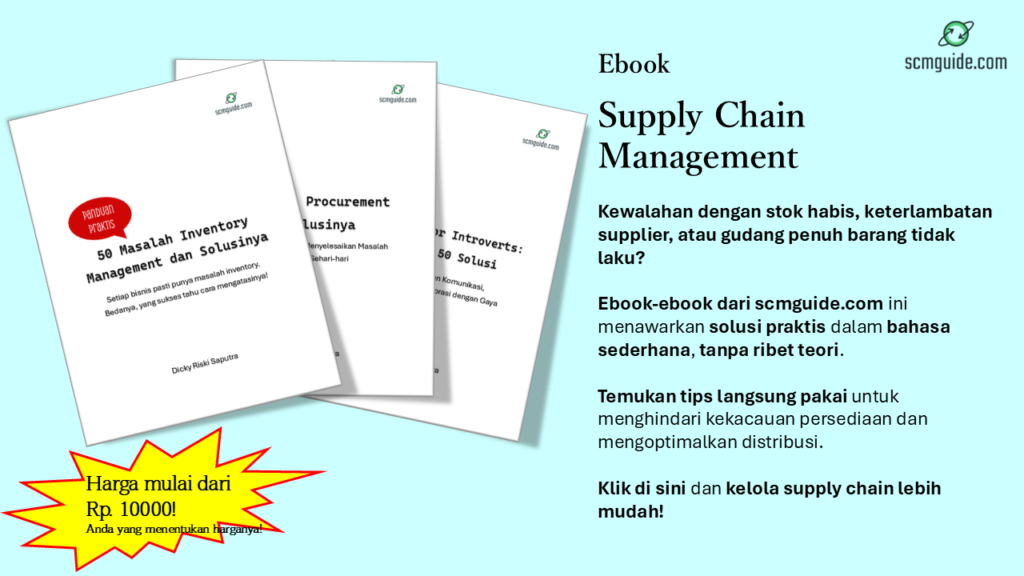Stocktaking discrepancies happen when businesses have trouble keeping track of their inventory. It’s a common issue that can mess up how much stuff a business thinks it has.
But don’t worry! We’re here to help you figure out what to do about it.
In this blog post, we’ll break down the steps for analyzing these discrepancies and fixing them so your inventory stays accurate and your operations run smoothly. Let’s dive in!
Before we go further into this topic, don’t forget to follow my LinkedIn account. You’ll get more helpful insights on supply chain management there.
Table of Contents
Step 1: Identify Differences
The first step in figuring out stocktaking discrepancies is to carefully spot any differences between what we expected to have in stock, according to our records or systems, and what we actually found during the physical count. This step is super important because it lays the groundwork for finding out why things don’t match up.
By really looking closely at what we thought we had versus what we actually have, we can figure out where the problems might be and how big they are. This step is the starting point for fixing any mistakes and making sure our inventory records are correct.
Once we’ve found the differences between what we expected and what we actually have, the next step is to sort these differences into specific groups. This helps us understand what kind of issues we’re dealing with.
We might find differences in how many items we have, differences in prices, issues with quality, or even mistakes in the types of products we have.
Sorting these differences into categories makes it easier to figure out what’s causing them and how we can solve them. It’s like organizing our problems so we can tackle them one by one.

Finally, it’s not just enough to find the differences - we also need to think about how they might affect our business. Stocktaking discrepancies can cause all sorts of problems, like messing up our financial reports, making it harder to manage our inventory, or even making our customers unhappy.
So, it’s really important to understand how these differences could impact us and make fixing them a priority.
By recognizing the importance of these discrepancies and taking action to fix them, we can keep our business running smoothly and keep our customers happy.
Step 2: Classify Differences
Once we’ve spotted the differences between what we thought we had and what we actually have in stock, the next big step is sorting these differences into specific groups. We break them down into categories like quantity variances, pricing discrepancies, and quality issues. This makes things easier to understand and helps us focus on fixing each type of problem separately.
By organizing the differences into clear groups, we can use our time and resources more efficiently to figure out what’s causing the issues and how to solve them.
Quantity variances are all about differences in the number of items we have compared to what we thought we had. These differences might happen because of mistakes when counting our stock, errors in recording transactions, or even problems like theft or shrinkage.
By looking specifically at quantity variances, we can dig deeper into what’s causing these differences. It could be issues with how we manage our inventory, problems with receiving or issuing goods, or even inconsistencies in how we restock our shelves.
Then there are pricing discrepancies, which happen when there are differences in the costs or values of our inventory items between what’s recorded in our data and what we actually see. These differences might come from mistakes when entering pricing information, changes in what our suppliers charge us, or even mix-ups with currency exchange rates.
By separating pricing discrepancies into their own category, we can focus on figuring out what’s going wrong with our pricing processes. This helps us make sure our prices are right and our financial records are accurate, keeping our inventory management system in tip-top shape.
You might also like:
- Why You Need to Adjust Inventory Policies to Address Rising Sales Demands
- How to Balance Space and Inventory Levels to Maximize Warehouse Efficiency
Step 3: Localize the Causes
When we’re trying to figure out why there are differences in our stocktaking, finding the root causes is super important. This means digging deep to understand why things aren’t adding up. To do this, we need to look closely at all kinds of documents like purchase invoices, receipts, and records of stock movements.
By checking these documents really carefully, we can spot any mistakes or problems in how we’re managing our inventory that might be causing the differences between what we expected and what we actually have.

Purchase invoices are like treasure troves of information about what we’ve bought. They tell us things like how many items we ordered, how much each item cost, and the total cost of the order. By comparing this info with our stock records, we can check if everything matches up.
If not, it could mean there are mistakes in how we’re recording our inventory transactions. Plus, looking at purchase invoices helps us make sure that we’ve received all the goods we paid for from our suppliers and that they’re properly recorded in our inventory system.
Receipts and records of stock movements are like roadmaps that show us where our inventory has been. By looking at these documents, we can track how goods move from when we receive them to when we store them and finally when we sell or use them.
Sometimes, though, the info in these documents doesn’t match up with what we counted during stocktaking. This could mean there are problems like mistakes in entering data, unauthorized movements of stock, or even theft.
By carefully checking receipts and stock records, we can find out where things might have gone wrong and fix them, making sure our inventory management is accurate and trustworthy.
Step 4: Evaluate Processes
Reviewing how we manage our inventory is really important for figuring out why there are differences in our stocktaking. This means taking a good look at all the steps we take from receiving goods to recording them in our system.
By checking each step carefully, we can find out where things might be going wrong and how to make them better.
First off, when we receive goods from our suppliers, we need to make sure everything is in order. This means checking that we got the right stuff and the right amount.

Sometimes, though, there might be mistakes in how we check or count the goods, which can mess up our stock records. By looking closely at how we receive goods, we can find ways to improve our checks, talk better with our suppliers, and make sure everything is properly recorded.
Next, storing our inventory properly is key to keeping track of everything. If our storage practices aren’t up to scratch, it can lead to mistakes in our stock records. Things like messy organization, unclear labeling, or not enough security can cause problems.
By looking at how we store our goods, we can find ways to tidy up our warehouses, use better storage methods, and keep better track of our inventory.
This helps us avoid issues like items going bad or getting lost, making our inventory management smoother and more reliable.
Step 5: Remediate Weaknesses
Making changes to fix the problems we found in our stocktaking is super important for keeping things running smoothly and making sure the same issues don’t happen again. These changes can involve lots of different things aimed at getting to the root of what caused the problems we found during our analysis.
One common way to fix things is to improve how we keep records. This means making sure we have strict rules for documenting everything, using the same methods for entering data, and checking our records regularly. By making our record-keeping better, we can make sure our information is accurate and up-to-date, which reduces the chances of mistakes in our stock records.
Another important way to stop the same problems from happening again is to strengthen our internal controls. This means setting up systems to make sure everyone follows the rules and that there are checks in place to catch any mistakes or problems early on.

We might do things like dividing up tasks so that no one person has too much control, setting up processes for approving inventory transactions, and checking in regularly on how we’re managing our inventory.
By making our internal controls stronger, we can lower the chances of things like fraud, errors, or sneaky activities that could mess up our stock records.
Finally, making sure our employees know what they’re doing is key to keeping our inventory in check. This means giving them training on how to handle inventory correctly, enter data accurately, and follow the right procedures. When our employees know what to do and why it’s important, they can help us keep our inventory management on track.
Plus, by giving them ongoing training and chances to learn new things, we can keep improving how we manage our inventory over time.
You might also like:
- 6 Tips to Manage Inventory with Expiry Dates and Minimize Losses
- 7 Ways to Manage Material Specification Changes in the Warehouse to Ensure Smooth Transitions
Step 6: Reconciliation
Making sure our records match up with what’s actually in stock is really important for keeping track of our inventory and making good decisions. This process is called reconciliation, and it’s a key step in fixing any differences we found during stocktaking.
Reconciliation means comparing the numbers we have in our records with what we counted in real life and figuring out where they don’t match. By doing this, we can make sure our records accurately show how much stuff we actually have on hand.
Once we’ve figured out where the differences are between what we thought we had and what we actually have, we need to adjust our records to make them right. This might mean changing the numbers to match up with what we counted, fixing any mistakes we found, or updating information like prices.

By making these adjustments, we can make sure our records reflect the true amount of stock we have, which helps us avoid having too much or too little inventory and keeps our inventory management running smoothly.
Sometimes, fixing the numbers in our inventory records also means updating our financial records. This could involve changing things like balance sheets or income statements to show the real value of our inventory assets and liabilities.
By making sure our financial records match up with our inventory records, we can make sure we’re following the rules, giving stakeholders accurate information, and making smart decisions about our business.
Overall, reconciling our records is super important for keeping our inventory and finances in check and making sure our business runs smoothly.
Step 7: Monitor and Follow-Up
Once we’ve made changes to fix any issues we found during stocktaking, it’s really important to keep an eye on things to make sure our fixes are working and to stop similar problems from popping up again.
This means checking regularly to see if our inventory management system is doing its job properly and if the changes we made are doing what they’re supposed to do.
By doing this, we can make sure our inventory records stay accurate and prevent any more headaches down the line.
Regular check-ins are key to keeping our inventory management on track. We need to set up a schedule for reviewing how things are going, like doing audits of our records and processes every month or every few months.
By doing these follow-ups, we can catch any new problems early on and fix them before they become bigger issues. This helps us keep our inventory system running smoothly and ensures that we can rely on our records to make good decisions.

And it’s not just about checking in once in a while - we need to keep monitoring our inventory management over time. This means staying alert for any changes in our business that might affect how we manage our inventory and being ready to adjust our practices as needed.
By staying on top of things and being flexible, we can make sure our inventory management stays efficient and helps our business run smoothly in the long run.
Conclusion
Analyzing stocktaking discrepancies is super important for keeping inventory in check. By following the steps in this guide, businesses can figure out why there are differences in their stock counts, fix any problems, and make sure their inventory records are accurate.
Doing a thorough analysis doesn’t just help fix immediate issues - it also makes overall inventory management better.
By using these strategies, businesses can make their stocktaking smoother, reduce mistakes, and manage inventory more efficiently. This means less hassle, fewer errors, and better profits.
So, by taking the time to analyze stocktaking discrepancies and make improvements, businesses can keep their inventory in tip-top shape and run their operations smoothly.
I hope you find it helpful!
Please share this article with your colleagues so they can also benefit. For more insights on supply chain management, follow my LinkedIn account. You’re free to use all articles on this blog for any purpose, even for commercial use, without needing to give credit.

 by
by 


